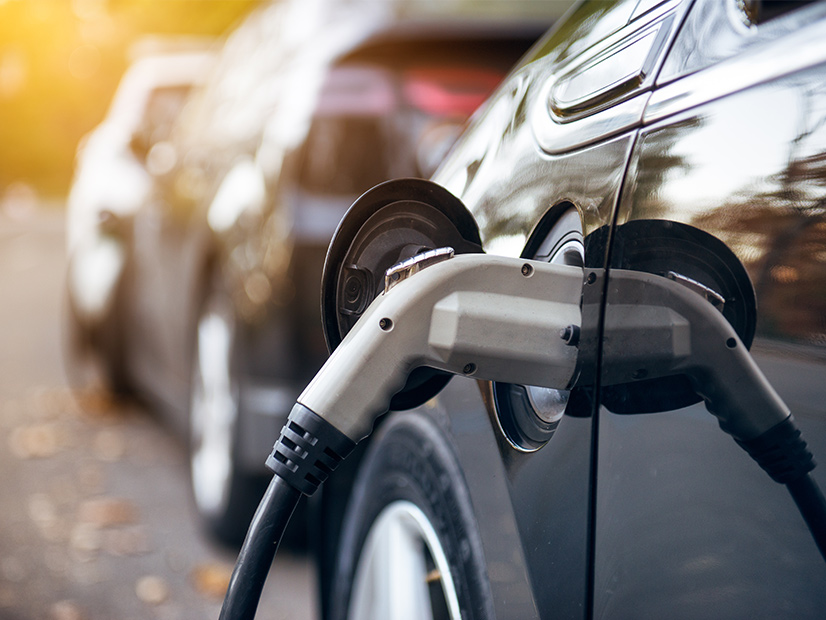Distributed energy resources, electrification and equitable wholesale compensation for both dominated two panels during the virtual North America Smart Energy Week.
Karen Olesky, an economist for Nevada’s Public Utilities Commission, said she’s both riddled with anxiety and invigorated over how quickly new distributed resource technology is being developed.
“It’s very exciting to see vehicle-to-grid charging and the electric company being able to access behind-the meter storage in someone’s home to use it as a demand response unit,” Olesky said during a Sept. 28 panel on electrification. “I think these are great DER technologies, and I love seeing them in pilot programs and proliferate, but I’m also scared about how quickly that technology is changing. Some of these technologies that utilities invest in might end up being obsolete well before the end of their useful lives.”
Olesky said ratepayers could be stuck paying for electric vehicle charging stations that are quickly replaced by newer models. She called the speed of adoption and its implications on long-term resource planning “exciting and kind of terrifying.”
Regulators and utilities are okay to “pivot” on incentive programs when they realize they’re unpopular or ineffective, she said.
Keith Dennis, vice president of the National Rural Electric Cooperative Association, said electrification stands to improve people’s quality of life.
“It wasn’t more than a hundred years ago when people were washing dishes and clothes by hand, and electricity really improved our lives and it can do it again,” he told attendees.
Dennis said electrification can save customers money, lessen environmental impacts, bolster grid reliability and lengthen the lifespan of heavy machinery and construction equipment. He added that he doesn’t want electrification to become politicized.
Oncor Electric Delivery’s David Treichler said the conversion to electrification is one of the most consequential changes the nation will undertake. Electrification will fundamentally change how we “move goods, people, things.”
Flying into the Dallas Fort Worth airport one night, Treichler said he concentrated on a bird’s eye view of the airport’s logistics warehouses. He said when thinking about how to electrify the airport’s freight services, he realized the centers were packed so tightly together that he couldn’t see where new substations could be squeezed in to handle charging.
Treichler said Oncor has developed a green fleet analytics tool that evaluates a customer’s load requirements for electrification and available nearby capacity to gauge the need for new electric facilities.
“The longer you wait to talk to us, the harder it is,” he said, urging companies interested in fleet electrification to act sooner rather than later.
National Grid’s Kristin Munsch said electrification’s growth is uncertain now because the changeover hinges on customer adoption.
“It’s talking about people’s cars, people’s home heating systems,” Munsch said. She said investments need to be made thoughtfully so that all customers can electrify their homes, not just those that can afford it.
“Like everywhere in the country, we’ve got very affluent communities, and we’ve got more challenged communities,” she said.
Panelists during a wholesale pricing session said appropriate compensation is necessary for a more active demand-side market.
“We have a generational problem of how we count it. How do we know what a megawatt is anymore?” OhmConnect’s Cisco DeVries said. “Ultimately, I think we just need to agree on some methodologies, and I think it’s really critical for the wholesale market that we get there quickly.”
“We have historically underestimated the potential of distributed clean energy in terms of serving our wholesale markets,” SunPower’s Suzanne Leta said. “A key question in my mind is: how do we ensure the right policies are in place to enable consumers to offer that value to the wholesale market and get paid for it? That’s really the question we need to focus on answering.”
Leta said the industry often ignores that just 3% of residential customers currently have rooftop solar. She said rooftop solar is poised for a “massive” growth trajectory. “We are just at the tip of iceberg,” she said.
In SunPower’s nationwide surveys, Leta said residents cite concern over outages as the primary reason for installing their own solar and storage.
“This is real-time for consumers, whether it’s an ice storm in Texas, or flooding in Louisiana or a hurricane in New York. … That’s what people are concerned about. Are power outages happening on a much more frequent basis?”
Leta said in addition to wholesale pricing, state commissions and utilities need to think differently about resource procurement. She said commissions’ resource planning is rooted in one-way transactions sourced from fossil fuels or nuclear power.
“That’s just not how our grid works today, and it’s not going to be how it works in the future,” Leta said.
Jill Powers, CAISO’s infrastructure and regulatory policy manager, said dynamic rates and demand-side management will feature more prominently in wholesale pricing.
“The duck curve is about 10 years old, and he’s been progressing quickly,” Powers said, noting that CAISO underestimated rooftop solar’s contributions. She said CAISO contends with oversupply and dramatic ramping needs in any given day.
DeVries commended CAISO for being among the first to allow bids on a 15-minutes basis from aggregated DERs.
“The wholesale market is the place where this transaction takes place,” he said. “It is not a place the customer understands at all. They are never going to understand it. They’re still incredibly confused as to why we might pay them to save energy. That makes no sense [to them].”
He said the aggregator’s role is to simplify and translate DER use into the wholesale market.
“We can’t say to customers, ‘You can’t turn your air conditioning on right now.’ Right? That’s a no-go,” DeVries said. “The utilities have tried that forever. It just doesn’t work.”




